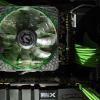[UPDATE] Official : FreeSync Launched, Dubbed Adaptive-Sync.
-
Featured Topics
-
Topics
-
vortexx21 ·
Posted in CPUs, Motherboards, and Memory0 -
Spencerinspace ·
Posted in Troubleshooting1 -
0
-
3
-
1
-
2
-
Inflex301 ·
Posted in New Builds and Planning4 -
8
-
Highguy ·
Posted in Troubleshooting0 -
4
-

















Create an account or sign in to comment
You need to be a member in order to leave a comment
Create an account
Sign up for a new account in our community. It's easy!
Register a new accountSign in
Already have an account? Sign in here.
Sign In Now